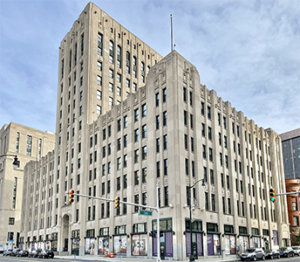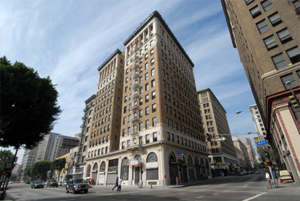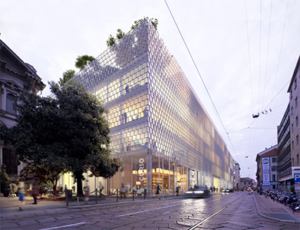2023 has been a disappointing year for those hoping to see substantial improvements in the Affordable Housing Crisis. In the US, home affordability is the worst it has been since 1984 while in Canada, the situation is arguably worse with experts estimating that it will take until 2027 before home prices fall back into an affordable range for the average Canadian. The escalating severity of the housing crisis has prompted government leaders to respond on numerous fronts, including a growing reliance on ‘Shot Clock’ legislation and short-term consultants as temporary stopgap measures to fast track affordable housing stocks.
With the affordable housing situation historically dire on the residential front, city planners are being hit with a veritable double whammy with vacancy rates for commercial properties reaching unprecedented highs in numerous North American cities in 2023 (Source: US, Canada). What started as a shift to modern away from older Class B & C commercial buildings has been hugely accelerated by the pandemic. With remote/hybrid work now established as the new normal for many companies, the mass vacating of older commercial properties is creating virtual ghost towns in formerly vibrant downtown cores across the US and Canada.
With commercial real estate availability increasing at precisely the same time that affordable residential housing stocks are dwindling, multiple municipalities are embracing a solution that maximizes the opportunities of this unique market dynamic, Adaptive Reuse.
In the context of affordable housing needs, adaptive reuse converts suitable commercial spaces into multi-tenant/multi-use spaces, particularly suitable for first-time home buyers requiring market entry affordability. To date, affordable housing solutions have been overwhelming demand-side targeted [I.E. Intended to suppress household debt while the root causes of undersupply (red tape, fees, infrastructure gaps, and coordination issues between layers of government, etc.)] remain unaddressed. In stark contrast, adaptive reuse goes to the heart of the supply issues prolonging the housing crisis, incentivizing the owners of vacant commercial properties to convert these large footprint properties into significant residential housing inventory.
A theoretical win/win scenario, adaptive reuse has the potential to allay two negative housing trends (shrinking residential inventory, growing commercial property vacancy), while simultaneously facilitating numerous benefits for all stakeholder groups.

In cities such as Detroit and Kansas City, the revitalization impacts of adaptive reuse initiatives are already proving their viability. North of the border, the City of Calgary is working in partnership with global engineering firm Gensler, to develop a ‘tool and cost’ model to validate the City’s aggressive plans for downtown revitalization, with $45 million in incentives targeting the conversion of existing office space to residential, redevelopment, or adaptive reuse. With 12 million square-feet of vacant office space in 2021, Calgary’s commercial vacancy rate of 32% was double that of Detroit when that city declared bankruptcy in 2014.
Utilizing Gensler’s commercial-to-residential scorecard, Calgary’s economic development leaders were quickly able to analyze 28 buildings totaling 3.2 million square feet. 30% (10-12) were deemed viable candidates for conversion creating 2,000 housing units for an estimated 4,000 people. Moreover, by focusing their efforts on a cluster west of the city, developers believe the simultaneous conversion of multiple buildings will create a positive downstream effect leading to ancillary investment and infrastructure development. To spur this development initiative, Calgary’s city council approved the Downtown Development Incentive Program granting developers $75 per square foot of vacant office space to be converted to residential.
With 25-30% of commercial properties proving viable for conversion to residential, the adaptive reuse potential for Calgary is comparable to that of other municipalities progressing similar studies. While such percentages may seem small, it is important to note that the large footprint of these spaces represents billions of square feet of actual housing space across the US and Canada, and often in prime central locations.
To assess the viability of potential commercial-to-residential conversions from both a cost and project viability perspective, property developers and economic development leaders alike focus on four key assessment factors:

Given the potential for Adaptive Reuse to address the supply-side issues of the affordable housing crisis, government leaders in both the US and Canada have been quick to launch policy initiatives designed to take full advantage of these unique market conditions. In the US: New York, Chicago, Washington, California, and Wisconsin, have all introduced policies to incentivize commercial conversions. The approaches undertaken include new tax credits, grants, no-interest loans, and specific zoning exemptions to lessen the bureaucratic requirements that impede the conversion process (Source).
In Canada, the 2021 Federal Budget reallocated $1.3 billion through the National Housing Co-Investment Fund and Rental Construction Financing Initiative, including the conversion of vacant commercial property into housing. This announcement followed an earlier campaign promise by the federal Liberal Party to spend $600 million to convert empty office and retail spaces into market-based housing.
A smaller subset of funding initiatives specific to historic buildings affords further opportunities for commercial space conversion in the US, with up to 20% of eligible costs available as tax credits depending upon the building’s age and location.
Naturally, almost every good idea with great potential faces obstacles to overcome, and adaptative reuse initiatives are no exception. Numerous zoning restrictions and regulatory barriers exist in jurisdictions across North America to increase the cost and lessen the will of developers interested in taking on projects with the potential to simultaneously increase affordable housing supply and revitalize downtown neighborhoods via the rehabilitation of vacant commercial inventory.
However, with the Affordable Housing Crisis growing more catastrophic with each new report, and the supply of available commercial real estate growing in serendipitous synchronicity, government leaders and property developers like those in Calgary are now working to overcome some of the traditional barriers to adaptive reuse in an effort to remake a real estate market that is clearly keen to discard one category of buildings in favor of another more desperately required housing need.
Adaptive reuse initiatives rely on the full range of capabilities at the disposal of today’s city planners, economic development experts, and civic policy legislators. Working in tandem, these parties can transform the built environment through a clear focus on achievable affordable housing goals and streamlined supply priorities:

Once a city or region embarks upon a large-scale adaptive reuse program, the ability to achieve the strategic objectives of the initiative will be greatly dependent upon the effectiveness of the policy and regulatory levers applied AND the efficiency of the resultant zoning and permitting processes needed to facilitate the expedient planning and conversion of affordable housing stocks.
One of North America’s largest cities, Los Angeles, is providing best practices guidance in this endeavor with an impactful adaptive reuse ordinance that is effectively transforming much of the city’s vacant commercial space downtown into affordable housing targeted at low-income residents. In examining Los Angeles’ effective rollout out of the ordinance, several key attributes emerge:
The ability to seamlessly align numerous policy infrastructure changes (such as new ordinances, zoning code provisions, conditional permits, code exceptions for historic buildings, discretionary approval processes, bylaw incentives, density bonuses, etc.) with the efficient workflows required to expedite the resultant planning, permitting, and code enforcement processes is the balancing act required to turn a smart adaptive reuse strategy into practical application on the ground. Key to maintaining this balance is the effective deployment of an enterprise capable permitting and licensing solution.
Supporting the cost effective and expedient provision of broad-based initiatives involving multiple stakeholders is where enterprise software solutions like POSSE PLS truly shine. A fully integrated system providing out-of-the-box workflow automation for the entirety of the development process from initial application through ePlan review to final permitting and inspection, POSSE PLS is the digital meeting place and robust toolset where all stakeholders can meet, collaborate, share documentation, and track project progress with optimal efficiency and cost effectiveness. With your City’s unique zoning, building code, and permitting requirements ‘baked’ into your POSSE PLS configuration and civic permitting portal, a firm foundation is established to quickly transform the strategic aims of an adaptive reuse initiative into the powerful automation assisted workflows required to turn paper policies into concrete results.
In numerous cities across North America, the market is sending a message. Affordable housing is in high demand. Older commercial buildings are not. For more and more municipalities, this message has been received, loud and clear, and action is now underway to launch an effective adaptive reuse initiative to transform unwanted working spaces into much needed affordable living spaces.
Interested in finding out more, including how POSSE PLS can support your community’s strategic goals?
Contact us today for a no-obligation Discovery Demo.